Semantic Optimization: A Case Study
In this post I'll show you some results achieved on real websites using a new way of doing SEO : Semantic Optimization .
I just want to clarify that I will keep this post updated as new results appear in the projects I work on. Here I will gather more recent results as well as older ones, which also demonstrate the practical results of semantic optimization.
Semantic optimization is the future of SEO.
search aims to generate more relevant results by understanding the researcher and the contextual meaning of terms when they appear in searchable data spaces on the web or in closed systems, thereby improving search accuracy.
Content that scores well in semantic search is well-written in a natural voice, focusing on user intent and considering related topics that users might search for in the future.
Semantic optimization is a new way to optimize online , which takes into account the meaning of each term on your website ( not just words, but entities such as people, events, happenings) and the relationship between each of these entities.
The goal of semantic search is to deliver more precise results to the searcher by understanding their intent, going beyond keywords , and delivering results like the one below.
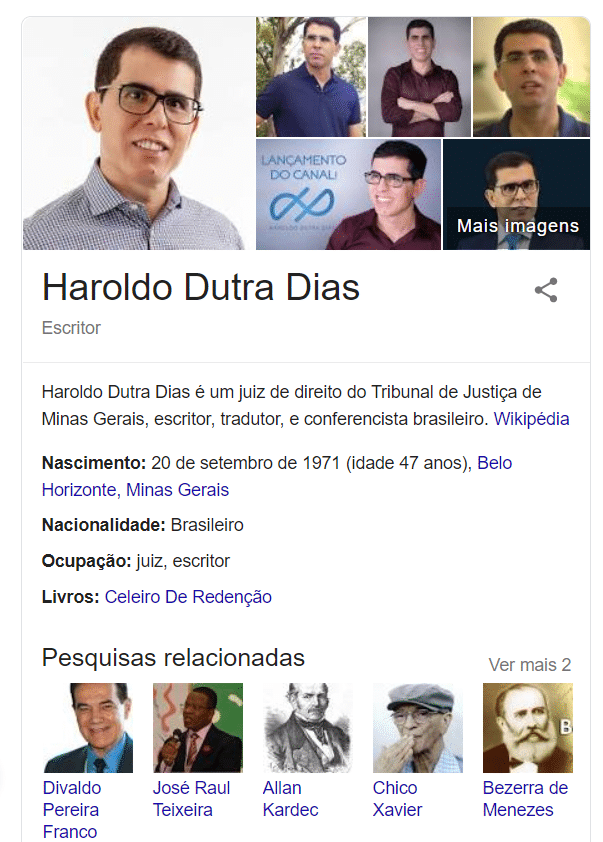
If you search for Haroldo Dutra Dias, you will find this result shown to the side.
There you will find the first section with photos of the spiritualist speaker, with a link to see more images.
Then, an excerpt from Haroldo's Wikipedia page, along with information about his place and date of birth, and other details .
After that, we see indications of searches related to the topic sought. This search uses what I mentioned above: the connection between entities within the same domain , in this case, Spiritism.
The people ( semantic ): Haroldo Dutra Dias, Divaldo Pereira Franco, José Raul Teixeira, Allan Kardec, Chico Xavier, and Bezerra de Menezes are related because of their activities within this area.

Success Stories with Semantic Optimization
The first success story I want to show is the one achieved on PLING's blogs.
Pling is a company that sells logos, websites, and systems to various types of freelance professionals.
Semantic Optimization for Blogs
When I was responsible for marketing , I created a content creation strategy based on semantic domain research that defined the themes and entities to be addressed by each website and blog. With that, the results started to appear.
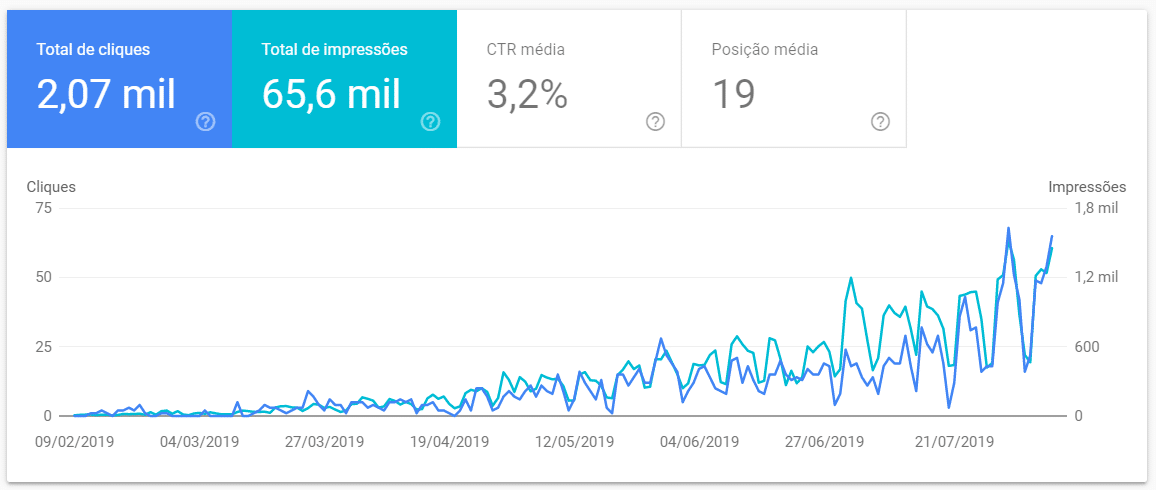
The graph above shows six months of data from one of the blogs, the Psychology Blog . Despite no longer working for that company and the content not being updated for over a year, the impressions and clicks continue to rise, as the numbers show.
This is one advantage of semantic SEO work compared to traditional SEO work: its longevity!
All the projects where I've developed this technique for over a year demonstrate a constant improvement in the results achieved. Of course, I don't mean that if you hire me for a year and then stop doing the work that needs to be done, you'll get the same results as if the project weren't interrupted.
A semantic optimization is almost time-proof, but if maintained consistently it will yield increasingly better results.
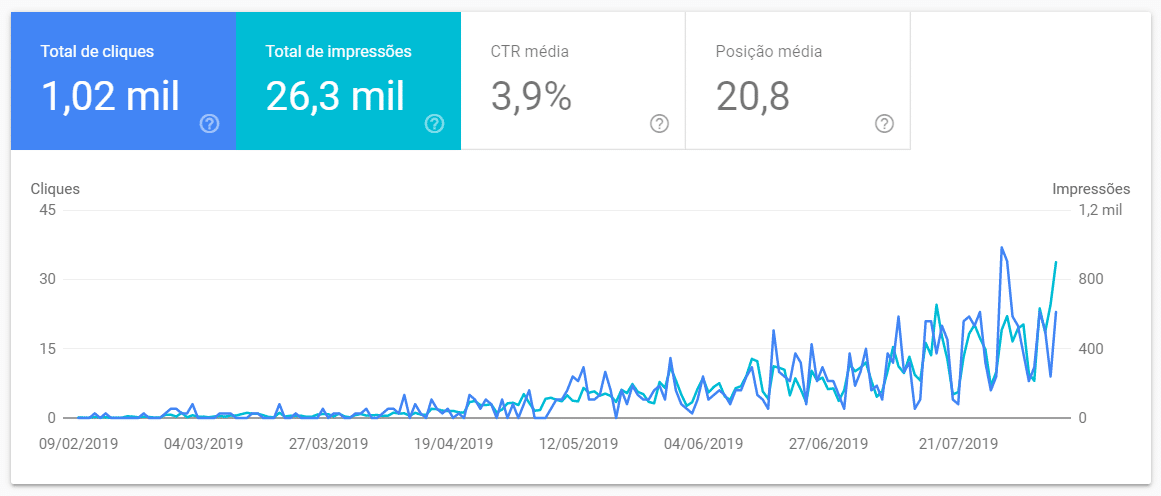
Another result that follows the same path as the previous one is the Architecture Blog, a project created in the same way I explained above, also for Pling. Even after a year without new content, it continues to bring increasing results.
It's clear that if the blog had been updated at the previous pace, the results would have been much better . But the decision about that wasn't mine, it was the company's management's.
Semantic Optimization for E-commerce
All types of websites can benefit from semantic search . The work done for the Mais Bonita por Menos website followed a similar path to that done with Pling, but using a strategy appropriate for a website that sells products focused on the beauty market.
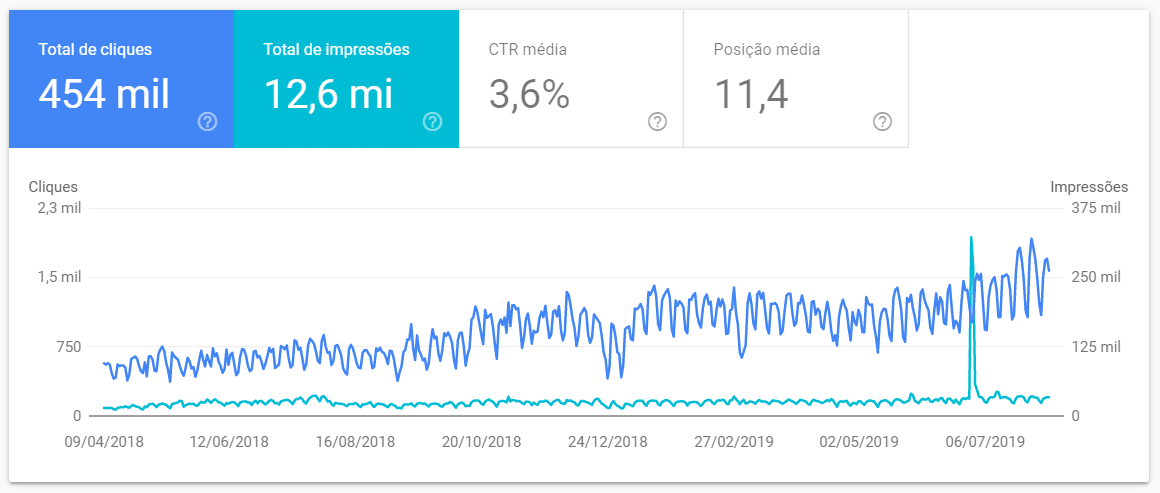
In this project, I worked with a programmer to modify the website's programming so that the generated code became increasingly semantic. The goal was to make search engines understand the relationship between product images, prices, descriptions, and other information, displaying increasingly richer search results, especially on mobile devices.
The beauty market is very competitive, and although the project was interrupted a few years ago, the results achieved, mainly through clicks, continue to yield good results. For confidentiality reasons, I cannot show more data, but the graph above already demonstrates the results achieved and projects what could be achieved with the continuation of a semantic optimization project .
Semantic optimization for a video website
The website Espiritismo TV is a platform for Spiritist videos. This site is one of the most important in Brazil in this field and has prominent speakers among its partners. Among them is Haroldo Dutra Dias, whom I mentioned at the beginning of the post.
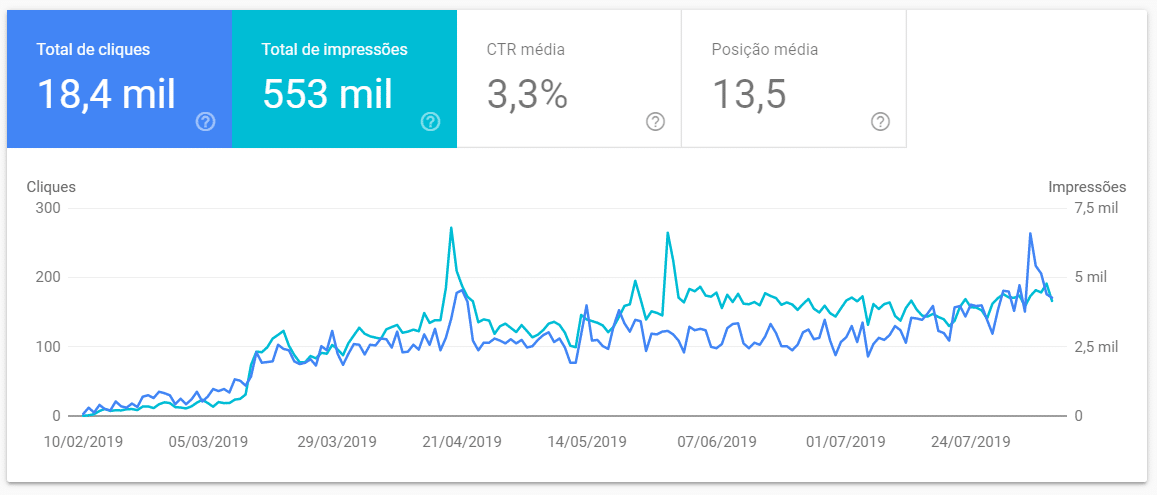
The graph above shows data from the last 16 months, and the impact of semantic optimization is clear.
In this project, we went further in our optimization work and created a taxonomy using an application called WordLift. With it, we can automate the process of creating a vocabulary of terms related to the semantic domain , enriching text content and creating internal and external connections between the entities addressed in the website's content.
Furthermore, by creating vocabularies like Allan Kardec's, we can achieve this type of internal linking:

The result achieved is that search engines use the semantics of sites like dbpedia as a reference to understand the site's content. When you help a search engine like Google understand your content, results like those in the graph below start to appear.

The numbers above are for accesses via search. The difference is clear: on the right, at the beginning of the graph, we have a very low volume of accesses, but soon the search engines began to understand the site's content. The blue dot represents the moment when we started semantic optimization (before, the optimization process was the standard one ).
The numbers started to rise gradually, experienced a drop during a domain we made, but after that they returned to their previous volume and are now rising even higher.
Annual Comparison of Semantic SEO Results
Semantic optimization and its advanced results.

The most impactful result we achieved in the graph above was placing content published two days prior on Google Discover .
The video “ Toma Lá da Cá ” was included in Google's content recommendations on its search , available on all Android devices (and iOS devices after installation), and this resulted in over 81,000 views !
Stay tuned to this post if you want more examples of successful case studies using Semantic Optimization. This post will be constantly updated with new data and projects.


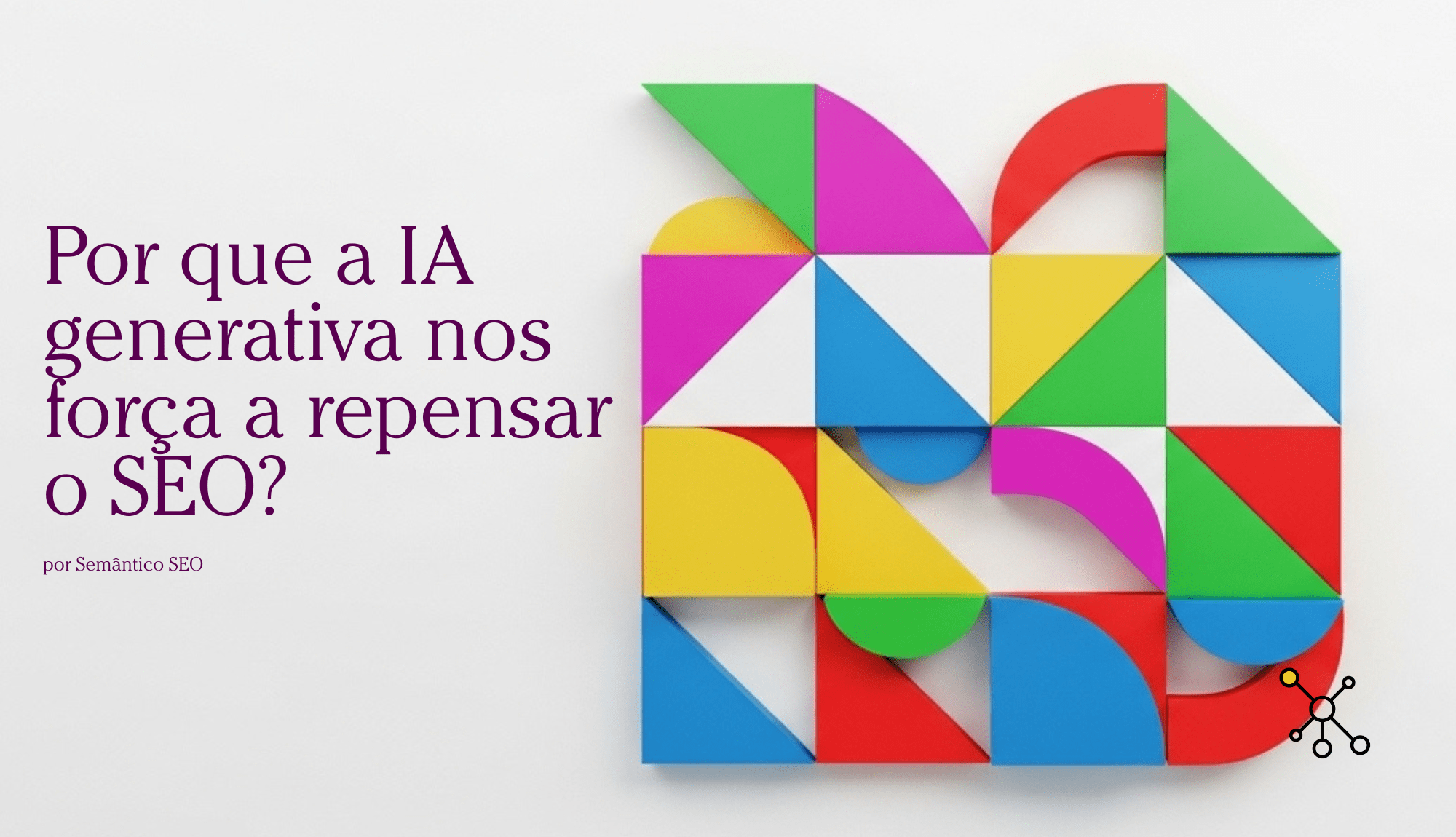


Post comment